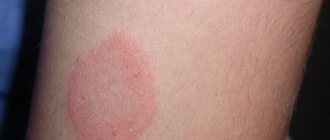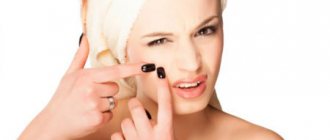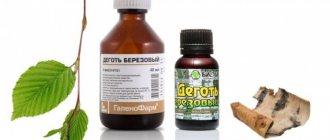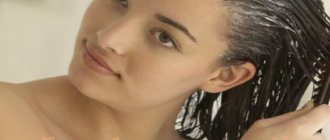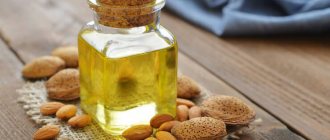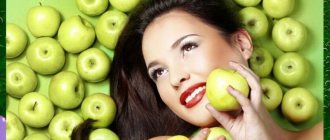18.01.2017
Dermatological diseases are diagnosed visually and laboratory. If threads of mycelium are found in the scraping, this indicates the presence of a fungus in the patient. This analysis result in the absence of external symptoms is encouraging, since it indicates that the fungus on the skin or nails has just begun to develop.
If fungal mycelium is detected, measures must be taken immediately to prevent the development of the disease and complications.
You can become infected with a fungus wherever the skin remains unprotected from contact with an infected surface. The fungus can affect fingernails, body skin, and is often diagnosed on the feet. When it comes into contact with unprotected skin, the mycelium actively spreads the fungus, especially if conditions are favorable.
Factors of infection
- When visiting public swimming pools, saunas, baths, you need to be especially careful, since the mycelium loves dampness and warmth. It is recommended to wear rubber slippers, use only your own towel, washcloth, etc.;
- using foreign or unsterile manicure accessories can lead to fungus soon appearing on the skin or nails;
- public places - shops, transport, elevators, toilets - are potentially dangerous for those who do not follow the rules of personal hygiene;
- wearing someone else's shoes, socks, or using towels - there is a risk of contracting fungal dermatitis;
- You can get sick if you shake hands with an infected person. Read also: Birch tar against fungus - effectiveness and reviews.
Prevention measures
To prevent the development of the disease, you should follow simple rules:
- wear shoes, underwear and clothes that fit;
- wash your hands after playing with animals and upon returning home from the street;
- use only your own clothes, hats, towels, combs, washcloths, and other personal items;
- monitor body weight and, in case of diabetes, monitor blood sugar levels;
- on beaches, in bathhouses, saunas, swimming pools, wear shoes approved by the administration; after visiting them for preventive purposes, treat the interdigital folds with Daktarin or Miconazole spray powder;
- Take antibiotics only as prescribed by your doctor.
All mycoses in the early stages are treated quickly and successfully. To prevent the disease from becoming chronic, you should be attentive to your health and consult a dermatologist in time.
Symptoms of fungal infections
Mycosis of the feet affects the soles and folds of skin between the toes. They appear between the fingers as peeling, cracks and blisters. The stratum corneum thickens on the sole and small cracks appear. Bubbles may form on the arch of the foot, and when opened, erosions remain.
Fungus on the hands in the squamous form manifests itself as peeling in the skin grooves. Cracks form, irritation and itching appear. In the dyshidrotic form, the appearance of vesicles is observed, capable of grouping and forming blisters.
Mycosis of the trunk appears on the skin of the back, chest, shoulders and neck with lichen versicolor. These will be flaky spots of white and brownish color with clear boundaries without any significant signs of inflammation.
Fungus on the scalp is more common in children. It is characterized by rounded foci of baldness with a weak inflammatory process. Hair breaks off at the root. The development of a suppurative form is possible, when the lesion becomes covered with purulent crusts.
Nail fungus or onychomycosis is characterized by discoloration of the nail plate, thickening, irregularity and brittleness.
Mycosis on the face can be localized on the chin, lower lip, and spread to the neck. In the infiltrative-suppurative form, large lumpy nodes of blue-red color are formed.
The pustules merge to form abscesses. In the superficial form, the symptoms are the same as when the smooth skin of the body is affected.
Depth of the mycelium of forest mushrooms
It’s not always possible to go out into the forest to pick mushrooms, but you can plant them on your site. If you like to do everything yourself, then you will like the idea of growing wild mushrooms: this way you will always know where to look for them.
Methods for growing wild mushrooms on the site
1. Transplanting mushrooms from the forest To plant using this method, you should dig up the mycelium and transfer it to your site. You need to move the mycelium very carefully, without shaking the soil from the excavated layer. Before replanting, prepare the soil under the tree. At a distance of about 0.5 m from the trunk, remove the top ball of soil 30-40 cm thick. Place compost of leaves and wood dust on the bottom, water and sprinkle with soil. Place the dug mycelium on the prepared place, water it and cover it with a layer of fallen leaves. For the first two weeks, if there is no rain, water the planting site daily using the drip method.
To plant wild mushrooms, choose a shaded, moist place. It is better to replant the mycelium under the same tree as the mother one: if you took the mycelium under a birch, it means it is better to replant it under a birch. Be careful when choosing mushrooms for transplanting - do not bring poisonous ones to your site.
2. Reproduction by mycelium The mycelium of forest mushrooms is sold in garden centers. Manufacturers offer detailed planting instructions on the packaging. Planting mycelium requires site preparation.
Choose a place in the shade of a tree, at a distance of 50-60cm from the trunk. Remove the top ball of soil by 50cm. The area of the sowing area depends on the amount of mycelium in the package and is indicated by the manufacturer. Place 20 cm of forest substrate at the bottom: fallen leaves, pine needles, dust and sawdust. Cover evenly with a layer of soil 10 cm thick. For the next layer, mix the soil with the substrate and add 10 cm. Next, mix the mycelium with soil and a growth enhancer (can be purchased at a garden center or specialized stores). Distribute the mixture, lightly tamping with your hands. The last layer is soil. Immediately after planting, carefully water the seeded area and cover with fallen leaves.
In order not to prepare such a complex substrate for mycelium, you can purchase a ready-made substrate for mushrooms - it can be purchased at garden centers and stores specializing in seeds and fertilizers.
For the first two weeks, strictly follow the watering schedule. In the future, make sure that the soil at the sowing site does not dry out. Mushrooms planted this way will grow the next year, and the mycelium will bear full fruit two years after planting. The mycelium will bear fruit in the period from 2 to 5 years from the first harvest.
Gently loosen the soil above the planted mycelium regularly.
3. Mushroom seedlings The easiest way to grow wild mushrooms on your site. Chop the caps and pieces of wild mushrooms or grind them in a meat grinder, and soak them in water for a day. Around the tree near which you plan to grow mushrooms, dig up the soil and add forest substrate to it. Water the prepared area with infused water and pieces of mushrooms and cover with fallen leaves.
Experts disagree on when the first mushrooms planted in this way will appear. Some claim that they will be in the first year of planting, others - after a year.
The listed methods differ in level of complexity, but all of them are most effective for growing wild mushrooms. You can try planting porcini mushrooms, chanterelles and saffron milk caps using these methods.
Useful tips Whatever method you choose to plant wild mushrooms, you should follow a few tips:
• choose a place for planting in dense shade • make sure that the soil is moist, add drip irrigation if necessary • add a growth activator to the soil in spring • plant mushrooms no more than half a meter from the tree • plant in the cool part of the day the best time to plant mushrooms – period from May to September
Remember that wild mushrooms do not take root very well near fruit trees. It’s good if there are several forest trees, deciduous or coniferous, on your site. If there are no such plants on your site, experiment with planting them near wooden buildings on the shaded side.
You can transplant several young trees with mycelium in the roots to the site. This method is very labor-intensive and complex. It is not suitable for owners of small plots.
Advice on how to grow wild mushrooms on your property is quite controversial. The fact is that the result depends on many factors: time, weather, watering, soil, mycelium, etc., but it is worth it. Mushrooms grown on the site are almost undamaged by insects and taste no different from their forest brothers. You will also be 100% confident in their environmental friendliness, unlike mushrooms purchased on the market and collected from nowhere.
Fungus treatment
Treatment of various types of fungal skin infections is carried out with systemic drugs and local agents. In practice, dermatologists and trichologists use both monotherapy and a combination of anti-fungal agents.
If the disease is detected in the initial stage with minimal skin damage, then it can be treated with external antifungal drugs.
If the mycotic process is widespread throughout the body or has penetrated deeply into the body, affecting the nails and hair, then the treatment is carried out in a comprehensive, long-term manner.
Antifungal drugs have fungistatic and fungicidal properties. The former inhibit the formation of new fungal spores.
The latter have a detrimental effect on the causative agent of the disease, then the fungus does not produce mycelium threads and its cells are destroyed.
Conventionally, all antifungal drugs are divided into 5 groups: morpholine derivatives, polyene antibiotics, allylamine drugs, azole compounds and drugs without a clear affiliation to the above groups.
When prescribing treatment, the doctor takes into account the nature of the medication’s effect on a specific type of fungus. For example, preparations based on griseowulfine act on dermatophytes, polyene antibiotics act on molds and yeasts.
Preparations of zinc, selenium, benzyl benzoate are prescribed in the presence of Malassezia and Corynebacterium minnutissium fungi.
Modern antifungal medications of the morpholine, azole and allylamine series have a wide spectrum of action against fungi and can reduce inflammation and itching.
Diagnosis of mycosis
The diagnosis is made based on:
- Clinical manifestations;
- Microscopy of skin scales;
- Glow from a Voodoo fluorescent lamp;
- Inoculating the pathogen on a nutrient medium to determine the type of fungal infection;
- DNA diagnostics.
In the diagnosis of systemic fungal infections the following are used:
- X-ray of the chest organs;
- CT scan;
- Ultrasound;
- Serological research method.
How to treat nail fungus
Among other fungal diseases, the most difficult to treat is onychomycosis or nail fungus. To choose the right treatment, the doctor takes into account the patient’s age, existing diseases, and the degree of damage to the nails.
Mycologists have a large selection of broad-spectrum fungicidal agents that can accumulate in the nail bed and the plastic itself. Preference is given to those dosage forms that are most effective and convenient to use.
Nail fungus is treated with local, systemic and combination drugs.
Local treatment promotes the accumulation of a high concentration of the active substance on the affected nail plate.
External antimycotics do not penetrate into the nail bed so effectively as to combat the viable fungi present there. Local preparations include varnishes Batrafen and Lotseril, creams Nizoral, Mycospor, Lamisil, Travogen, Mifungar, Pimafucin, Ecozax, Exoderil.
Sprays Lamisil and Daktarin are no less popular. The listed remedies are prescribed not only for the treatment of nail fungus, but also for fungus on the foot, between the toes against the background of onychomycosis.
Among the combination drugs containing actimicotics in combination with an anti-inflammatory agent are Travocort, Pimafucort, Triderm, Lorinden S, etc. In parallel, local antiseptic substances are used - aniline dyes, iodine.
Systemic drugs act against a wide range of pathogens. Often mycosis of the feet is caused by a mixed fungal infection.
Therefore, doctors prescribe anti-fungal drugs that can destroy mycelium at the cellular level and suppress the synthesis of its components.
Effective systemic drugs are Orungal and Sporonox (based on itraconazole), Diflucan and Forkan (based on fluconazole), Lamisil (terbinafine).
Types of Mycelium
The species of the pathology is determined by a fragment taken from the carbohydrate material that makes up the growth.
The following groups are distinguished:
- Ascomycetes are varieties of:
- yeast-like
- moldy,
- dermatophytes.
- Zygomycetes.
- Basidiomycetes.
- Deutremycetes.
These are four groups out of eight, but they are the ones that pose the greatest threat to health.
And it doesn’t matter where any classification of fungi in the form of mycelium appears, the occurrence of pathology cannot be traced on the internal organs, but the changes seen on the nails are a signal of distress.
Medicines for fungal infections
One of the principles of local therapy for fungal infections is the alternation of drugs in order to avoid fungi becoming accustomed to a particular drug and developing immunity from it.
To treat the squamous-keratotic form of the fungus, keratolytics are prescribed in ointments: Arievich, Arabian, Salicilova, Andriasyan.
For candidiasis, Levorin, Nystatin, Amphotericin ointment or Pimafucin are prescribed twice a day. The course of therapy is 2 weeks. As a result of treatment, foci of candidal erosions, intertrigo, and paronychia are destroyed.
Treatment of mycosis of the skin in acute form against the background of severe inflammation begins with the elimination of allergic manifestations, swelling, and exudation.
For this, wet-dry dressings and lotions with astringents and disinfectants are prescribed. This could be boric acid, ethacridine, tannin.
After this, ASD paste, boron-naphtholan paste, corticosteroid and antifungal creams Triderm, Mikozolon, Travocort are applied to the lesions. This therapy quickly eliminates inflammation and allows you to quickly switch to the use of fungicidal drugs.
It is important to consider that creams with corticosteroids are used for no more than 7 days, otherwise the fungus will begin to multiply more strongly.
If the fungus has affected the scalp and smooth skin, a combination of external and systemic medications is prescribed. Iodine is applied to the affected areas in the morning, and medicinal ointment is applied in the evening.
For severe inflammation, medications are used that contain antifungal agents and corticosteroid hormones. If the process occurs in an infiltrative-suppurative form, salicylic ointment, disinfectant solutions of potassium permanganate, and furatsilin are used to remove crusts.
For the treatment to be effective, the hair on the head is shaved every 10 days.
What is Mycelium
What is fungal mycelium is spores, that is, the very seed of the disease. Microspores can appear both on any external area and on internal organs. The question arises, what is it when you see changes in the cover in the form of thin threads - this is the mycelium of mushrooms.
Once the pathogenic grain enters the body, it begins to gradually stretch out, forming a hollow tube. Then its walls become thinner and scattered over a large area, the mycelium first transforms into a hypha. A simple and clear example of hyphae is mold. And after this, mushrooms begin to appear in rich scattering.
Lamisil in the treatment of fungus
External medications based on terbinafine are highly effective. These are Lamisil spray and cream, as well as Lamisil Dermgel gel.
Any of the listed forms of medicine has excellent antibacterial and antimycotic properties. The presence of different forms allows the doctor to prescribe the most convenient application, taking into account the location of the disease and the degree of damage.
For example, Lamisil spray is prescribed in the acute stage of mycosis, which occurs against the background of swelling, rashes and hyperemia. After irrigation with the spray, the foci of the disease are covered with a film.
The spray does not cause irritation, quickly relieves burning and itching, the affected areas dry out and turn pale. Within 5 days with the help of a spray you can cure erythrasma, in 10 days - multi-colored lichen.
Lamisil in gel form is also prescribed for acute illness, as it is easy to apply and has a pleasant cooling effect.
Lamisil cream has shown itself well for infiltrative and erythematous-squamous lesions of the skin.
Cream and gel are prescribed for lichen versicolor, microsporia, candidiasis of skin folds and periungual ridges. Within a week of using the cream, such a concentration of the drug accumulates in the skin that it remains active for another week after discontinuation of treatment.
Courses of use of Lamisil, compared to other fungal remedies, are shorter.
Traditional methods
If the disease has only touched the mycelium with pathogenic tentacles, then the methods that have helped our ancestors for centuries can work effectively. What helps with this successfully:
- celandine,
- iodine,
- garlic,
- hydrogen peroxide,
- tea tree oil.
All procedures are carried out on the outer skin, without taking plant components internally.
Why are disputes dangerous?
The danger of the presence of fungal spores in a smear is the likelihood of the pathology transitioning to the chronic stage. Failures in the body cause exacerbation and manifestation of the disease. Fungal spores can trigger the development of more serious problems:
- to intrauterine infection of the fetus;
- to infection of the child when passing through the birth canal;
- to the development of oncology;
- to cervical erosion;
- to the addition of infections caused by microflora disturbances.
The degree of purity of the vaginal microflora
Based on the results of the smear, the degree of vaginal cleanliness is assessed:
- Leukocytes are normal . The main content is lactobacilli. Moderate amount of epithelium, moderate mucus. These indicators indicate the normal state of the microflora and good immunity.
- Along with lactobacilli, yeast and coccal flora . Leukocytes are normal. Epithelium, mucus – moderate. This state of the microflora is close to normal, but indicates reduced immunity and the possibility of the onset of an inflammatory process.
- Increased white blood cell count . The number of pathogenic bacteria (cocci, yeast fungi) predominates, lactobacilli are in minimal quantities. This state of the microflora indicates an inflammatory process.
- Exceeding the norm of leukocytes , pathogenic bacteria. There are no lactobacilli. Lots of mucus and epithelium. This result indicates severe inflammation and the need for immediate treatment.
Taking a smear on the flora and deciphering it
A smear from the vagina, urethra and cervix is taken to assess the microflora. A healthy environment is 95-98% populated by lactobacilli (Dederlein bacilli). The remaining percentage is opportunistic flora that lives peacefully in the genitals.
When conditions are favorable, pathogens begin to multiply, replacing beneficial bacteria and causing inflammation. A smear allows you to assess the quantity and quality of bacteria living in the vagina, as well as the level of acidity of the environment.
Deciphering a smear is determining the specific amount of bacteria it contains. Ideally, the main content should be Dederlein bacilli, the rest should be in minute quantities, and some microorganisms should not be present at all.
The total number of bacteria is indicated in numbers or by “+” signs in the range from 1 to 4. A minus sign indicates the absence of cells. The analysis form may contain the entry “not found” or “abs” (absence in Latin).
The results of the smear and the norms for the content of rods in them:
| Microflora content | Designation in the analysis form | Norm | Comments |
| Sticks | Gram. | ++++ | Healthy microflora is 4 pluses. |
| Epithelium | Pl.ep., ep. | 5 – 10. | Exceeding the amount or not having it at all is equally bad. |
| Leukocytes | L | Up to 15 - in the vagina, up to 30 - on the cervix, up to 10 - in the urethra. | Excess is evidence of inflammation. |
| Slime | Slime | No or moderate. | Its absence is ideal, but a certain amount is acceptable. |
| Key cells | Indicated by a general name or specifically discovered | No | Key cells are epithelium changed under the influence of pathogenic bacteria. Their presence is evidence of dysbacteriosis. Although a small amount during certain periods is acceptable. |
| Gonococci, Trichomonas. | Gn, Trich | No | Detection indicates an STD. |
| Candida fungi | Candida | No | Despite the natural content of the fungus in the microflora, it should not be present in the smear. |
